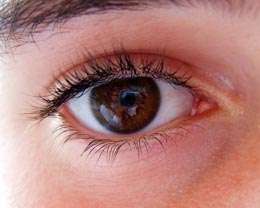Two or three is all we see

The human brain can see only up to three moving objects at a given instant, new research has found.
The discovery has important implications for road design and safety, driver and pilot training, industrial safety, fast-moving sports and other areas of human visual activity affecting safety and performance.
“We have found that there is a limit to the maximum number of directions, and hence distinct objects, that the human brain can see at any given instant in time,” said Dr. Mark Edwards of The Vision Centre and The Australian National University.
“That limit is either two or three, depending upon how the directions are defined.”
“An example of this is when we’re at a road roundabout: although we can see cars coming and going in different directions, we can’t actually keep close tabs on more than three simultaneously. Rather, what the brain does is process them in series, like cars heading from the right, then in the roundabout, followed by cars on the left.”
The same theory also applies to multi-tasking, said Dr. Edwards: “We may assume that people who are good at multitasking can process lots of different things at once, but what may be closer to the reality is that they are actually able to switch their attention faster to the next item.”
Dr. Edwards and Dr. John Greenwood tested the brain’s ability to detect signal directions using random-dot stimuli. These stimuli consisted of a field of scattered dots, with groups of intermingled dots moving in different directions. They found that people could not detect more than two signal directions at once if those signals moved in different directions. The people could detect three signals when they differed in speed or depth.
However, once these limits were exceeded, instead of seeing distinct signals, what they saw was only randomly-moving noise.
Dr. Edwards explained that the limits of two and three occur for different reasons.
“In order to see motion, the signal intensity - proportion of dots moving in a given direction - needs to be of at least a certain value. For the transparent displays used here, that intensity level has to be over 40 per cent, said Dr. Edwards. “What this means is there has to be at least 40 per cent of the dots moving in a given direction to stimulate the brain cells that are processing that motion.”
Given that the dots that move in different directions act as noise for each other, this means that the maximum signal level that can be obtained with three directions, if all of those signals drive the same motion cells, is 33 per cent, a level that is too low to been seen.
However, our brain’s motion cells are also sensitive to different speeds and depth, so if the various signals not only move in different directions, but also at different speeds and depths, then they are processed by different motion cells, and so it is possible to get the signal intensity above 40 per cent even when many different signal directions are used.
However, when this is done, the maximum number of signals that can be perceived can only increase to three: far less than if the limit was due purely to signal-to-noise limitations.
“Clearly, there is another processing limit being imposed by the visual system, most likely an attentional bottleneck. To see more than three different directions of motion, and hence more than three moving objects, you have to selectively attend to them, one by one,” he explained.
Dr. Edwards said that the new insight into the ability of the average person to keep track of numerous moving objects has important health and safety implications for a whole range of areas such as road design and planning, operator training for vehicles, aircraft and for large equipment, sports training and other activities that demand a lot of our visual system.















